#Trondheim Jazz Orchestra
Audio
Hedvig Mollestad & Trondheim Jazz Orchestra - Maternity Suite - absolute FIRE from the new album Maternity Beat (Rune Grammofon)
With Maternity Beat, Hedvig Mollestad has surpassed herself, most significantly as a composer and arranger, and delivered her most ambitious work to date. And that´s not a proclamation to be taken lightly. Mollestad, after all, has been one of Norway’s most adventurous and hardest-working musicians since the Molde International Jazz Festival named her the Young Jazz Talent of the Year in 2009. Recorded with the 12-piece Trondheim Jazz Orchestra (who have previously worked with legends like Chick Corea and Joshua Redman), Maternity Beat is a sprawling double album and true career milestone. The sheer sonic and emotional scope of this album required Mollestad wear multiple hats: guitar explorer, composer, arranger, improviser, collaborator, and, as the striking title implies, mother. In addition to encompassing the full evolution of her sound to date, it offers deeply personal meditations on the nature of family and pressing social justice issues.
While listeners will no doubt encounter the Mahavishnu Orchestra-inspired fire music that has made the Hedvig Mollestad Trio heavyweights in 21st-century fusion and jazz-metal, Maternity Beat also expands on the contemplative experimentation showcased on two of Mollestad’s recent solo works: 2020’s Ekhidna, and Tempest Revisited, released in 2021, both of which netted her a Spellemannpris (the Norwegian equivalent of a Grammy).
#Hedvig Mollestad#Trondheim Jazz Orchestra#fusion#prog rock#jazz#jazz fusion#big band#2022#rune grammofon
4 notes
·
View notes
Text
Hedvig Mollestad Interview: The Rhythm of Care
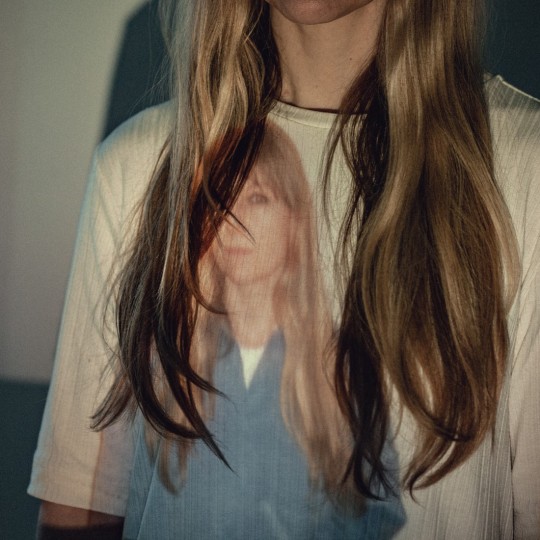
Photo by Kim Hiorthøy
BY JORDAN MAINZER
On her upcoming album Maternity Beat, Norwegian guitarist and composer Hedvig Mollestad redefines what it means to be maternal. Though she has two kids, her exploration of motherhood is not autobiographical, nor is it dependent on having children at all. Really, Mollestad boils the concept down to its essence: caring for something other than yourself.
Around the European migrant crisis of 2015/2016, Mollestad had her first child but was faced with images, whether on the news or in person, of immigrants from Syria coming to Europe to request asylum, many of whom had young children of their own. At the same time the unfortunate nativist aftereffects of the crisis arose around the world, Mollestad was beginning to feel like she needed to do something different with her music. She drafted Maternity Beat for the Trondheim Jazz Orchestra and pitched it to the Molde International Jazz Festival and Midtnorsk Jazzsenter. While they rejected it in 2017, they eventually accepted it for the Festival’s 60th anniversary in 2020, which, unlike so many other festivals that year, actually did go on, albeit at a much lower audience capacity. Last October, Mollestad and the Trondheim Jazz Orchestra recorded Maternity Beat, which finally sees release next Friday on Rune Grammofon.
Though the recorded version of Maternity Beat is a bit shorter due to studio time and vinyl constraints, the ideas are consistent: It’s a piece about how we support each other and help each other grow. Mollestad knew pretty early that she wanted to include spoken word, or at least voice, on the record, and from the very first track, we’re presented with what’s at stake: “Is there a boat on the horizon? / With mothers and children and fathers?” Atop rolling drums and sharp guitars, and eventually woodwinds that sound somewhat hopeful, we experience the rollercoaster of emotions brought upon by these images of desperation. “Do Re Mi Ma Ma” contains improvised nonsensical vocals that sound like a baby trying to say their first words, and clattering drums that are akin to how one might play with their toys. Eventually, the band picks back up, with horn blasts and searing guitar solos, the song developing in sophistication along the way. “Her Own Shape” is comparatively subdued, inspired by parents giving their children tools they need to create, with peaceful, wordless harmonies over bendy, exploratory guitars.
But it’s “Donna Ovis Peppa” that’s the album’s centerpiece, touching on the brunt of the record’s themes. The title itself is inspired by the phrase Dona nobis pacem (“Grant us Peace”), which comes from the Agnus Dei section of the Roman Catholic mass. “Ovis” itself is a play on Ove, the name of the father of Mollestad’s childhood best friend, who was a big supporter of her as a child and was sick with cancer at the time Mollestad was writing Maternity Beat. “I had a little contact with his family...in spring of 2020,” Mollestad told me over Zoom a couple weeks ago. “I had this urge to make something in this music for him. That’s the 5/4 pattern in the middle. It’s made only for him and his family.” He ended up passing away the day before Mollestad and the Orchestra performed for the first time. The last part of the song’s title is, yes, inspired by Peppa Pig, whose instrumental theme you can hear in the song if you listen closely enough. Mollestad’s children loved Peppa Pig, and though they’re too old for it now, I guess she wanted to nod at least once to her own motherhood.
Read my conversation with Mollestad below, edited for length and clarity, in which we talk about the album’s themes, working as a guitarist with a large orchestra, and the distinctive cover art.
Since I Left You: Last time we were talking, you mentioned Maternity Beat in context of reading Dag Hoel’s Fred er ei det beste, about ammunition production in Norway. Now, I understand the context, you thinking about the world you want your child to grow up in. As such, this album is your first time exploring gender and motherhood in relation to your music, which you were reticent to do before. Why was that, and what changed?
Hedvig Mollestad: The main reason in the beginning was as simple as I thought it was very important for there to be female instrumentalists where [people] were only talking about their instruments and their craft, the subject of their music and guitar and art. Very often, I saw female musicians being asked to comment on their gender, and of course, male musicians never were. So I was very strict on that. Gender-related stuff wasn’t my expertise. My experience with it would have been a very selective voice to the matter. If someone wanted to know something about it, they could find some good feminist research about it.
Music and art today are fighting a lot against the media. At the same time, it’s a way of reaching people, as that’s the nature of music, to be heard by others if not necessarily everyone. You want to find a way of getting into the ears of people who appreciate it. But [the media] is also problematic because it’s taking away the focus from the music itself. Very many musicians have to work with the media to be there in the right way, and you have to produce and tell people you’ve done it and present it in a way. [The media] grasping into the places where the art is made and taking over a little bit. For that reason, I was trying to focus on the music. As it’s instrumental music, I don’t have lyrics I can pull meanings and philosophies from.
Now, as I’m 40 and a mother of two, I’ve understood that as a touring musician and a composer, it’s also important for others that mothers are visible as musicians. Now, I’m sharing a little bit more for both female and male musicians. Touring as a family member is hard. It’s very good for the community to be open about it and talk about it and share our experiences. I’m also in a position to be able to work with my music as it is.
I was playing with my much beloved Trio for many many years. I started feeling that I wanted to make music for other kind of ensembles using other kinds of instruments and expressions. [I had the idea for Maternity Beat] very early in 2017, and I drafted it for the Trondheim Jazz Orchestra and the Festival. They didn’t pick it up at the time, but they picked it up a couple years later for their 60th anniversary. It took some time for it to come to live. I started to work on it and was supposed to work on it at the start of 2020. The pandemic came. The festival was so big, they decided to go through with it even though the capacity would be very low and very uncertain. I got to work on this February-June of 2020. The children were not in school. I spent time with them during the day when my boyfriend was working, and when he came home, I just left the house for my rehearsing and working space. I worked the evening and the night and came back. It was very focused and so undisturbed. It was such a good place to dig into another world, thematically and in terms of deeper structures and working them out all the way.
SILY: When did you start to think about motherhood and parenthood as it relates to the various social issues you explore on the album, like the migrant crisis?
HM: The idea for this music was first and foremost musical. I wanted to write for a big orchestra, and I wanted to put the guitar in a way that could drive it without taking up too much space and without being an instrument like the saxophone and the trumpets [that are] playing lines. The title Maternity Beat was very good to work from because it suggested rhythm and something that, yes, [has to do with] motherhood, but also mother earth. I wanted to connect it to my experiences, but I was also clear to myself from the beginning that it wasn’t going to exclude anyone. It’s not about being a mother; it’s about caring. What’s happening when you’re caring for someone or something? What’s waking us up to care for others? For people that have children, it could be parenthood, but it doesn’t necessarily have to me. Many people have bad relationships with their parents [or no parents] at all. [Maternity Beat] is a way of describing how we care and what makes us care. That’s the only thing we have in common. We all come from parents, but not all of us know them or like them.
When you’re a new mother, you’re very full of hormones, and it’s very overwhelming. Suddenly, another life is relying on you and your presence so much. That was very shocking for me as it is for very many new parents. There are so many parents and children around the world that have so many bigger issues than putting their kids to bed and making them go to sleep. When the migrant crisis happened in Norway in Europe in 2015/2016, that was when I had my first child. I found it very disturbing we were [having] this amazing experience at the same time there was a crisis for people in my situation. I was going around and making my baby fall asleep, but I felt like I wanted to go and help others because they really needed it. It’s a cliché, but with the loss of power you feel when a global crisis comes close, it feels meaningless to go on with your life and letting [the crisis] pass by on the side. So I didn’t want the album to be about [speaks in precious voice] my child and the beauty of life. It’s such a harsh contrast and still is.
SILY: Even though your music doesn’t usually have lyrics, this album does have passages of spoken word that allude to what you’re talking about. At what point during the creative process did you realize you wanted something more lyrical on here?
HM: I knew it quite early, because I was setting up what type of musicians I wanted to be a part of the project. I wanted to use vocalists for that purpose, not just to use their voice but to speak words that had meaning. I also knew very early I wanted the opening track to contain lyrics about the darkest part of this, to set the pace and get it over with. [laughs] For the first track, I was very inspired by Scott Walker and the opening of Tilt. It hasn’t been many years since I heard that for the first time. It made such an impression on me. The atmosphere that he creates, and the emotionlessness of the words. [sings] “Do I hear, 21, 21, 21.” There’s no metaphor. It’s very simple yet extremely powerful. I really wanted to go in that direction because the focus he managed to make there is really amazing. During the composing process, I wanted to have different theories in different parts of the music. I didn’t want it to be one big fat sausage. I wanted various things represented, both humorous and my experiences with motherhood. So I put in the words for when I thought [the music] needed it.
SILY: You really get at what you’re aiming for on “Her Own Shape”, which is about parents giving children the space and tools they need to thrive. That song is so spacious as compared to the rest of the record, almost like a canvas that demands to be filled.
HM: The words [on that song] are so very specific and filled up with serious meaning, the music cannot be as emotional as the text. It should be beautiful and easygoing, and a place for that lyric to be able to be what it is without too much disturbance.
SILY; Can you talk about the song “Do Re Mi Ma Ma”?
HM: The recorded version is a lot shorter than what we’re doing live. There’s a wonderful transition from the first part to the second. In general, [on the record], I was very specific for how the lyrics should be performed. I read them, recorded it how I wanted it to be, how short, etc. But I wanted to give [the vocalists] a task where they were a lot freer. So I thought, “Okay, what’s the [simplest] thing they could say?” It was, “ma.” So I gave them 5 minutes of improvisation. I said, “You can use 'ma,' but you have to avoid it sounding like 'mama,' at least for the first three minutes.” It was so funny and so interesting how they worked around that. I also wanted to have a bassline pattern that I could write so I could focus on the horns and trumpet section. “On The Horizon, Part 2″ has a lot of things happening with the band, very busy patterns with the guitar and the time signature changes. So I wanted to [follow it with] this very slow, bluesy bass riff where I could get the most out of the horns. That was a good thing to bring together with the vocalists.
SILY: You mentioned wanting to use the guitar in unexpected ways with this orchestra. Both of the singles, “All Flights Cancelled” and “On The Horizon, Part 2″, do that. When you think, “Guitar in a jazz orchestra,” you don’t necessarily hear the sounds of those two songs.
HM: “All Flights Cancelled” is a band song, with an A part and a B part. Rune Grammofon released that single first, but I think it’s the least orchestrated piece on the whole record because it’s only the band. I like it because it has a whole other mood than when we recorded it with the Trio. It was a good way to break everything up and bring back the focus to what I’m usually working on, which is the guitar in a band setting. [This time,] it was much more complex and involved a lot more composing. It was so hard to make it fit with the rest of the music. It had to be pointy and very audible. I’m not used to pointy and audible; I want to be broader. The tempo was quite high, and the time signature was changing. [The drummer] was really mixing the ingredients. That helped a lot with the role of the guitar, which had to be restricted.
SILY: I was also surprised by how much music from other regions of the world snuck in. “Donna Ovis Peppa” had some klezmer, and the hand percussion on “Maternity Sweep” was almost Latin. Was that intentional?
HM: I don’t think it was very intentional, but it was important for me to have percussion, other rhythmic impulses besides drums, to have another person go crazy on all these other rhythmic sounds. It’s an orchestra, and it should be in the drum section as well. The percussionist was instructed very little. He was encouraged to do what he thought would fit. Then we worked on it. We used congas and so many woodblocks! He was very free there. He’s amazing and eager and has so many ideas. He’s so vibrant and was working so hard. He was the one who left the studio the latest.
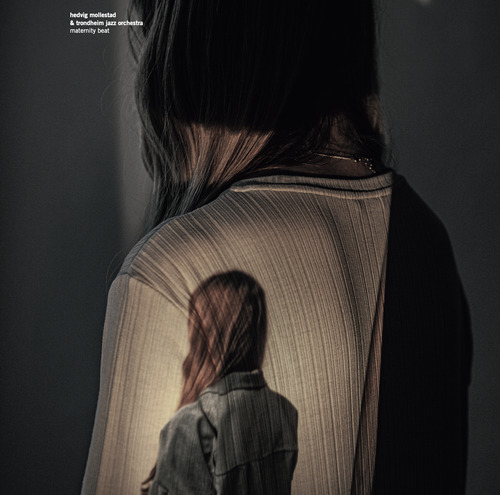
SILY: What’s the inspiration behind the cover art?
HM: I’ve been working with Kim [Hiorthøy] since the first record I released on Rune 11 years ago. When I signed there, cover art was one of the only things I couldn’t decide. They said, “Kim is making the covers, and he’s making them the way he wants. If you really hate it, you can tell me, and he’ll make another one, but if you just don’t like it, it’s not enough.” I was very cool with that because Kim is amazing. But I really wanted to have pictures on the covers. I talked to him about it, and he was cool about it. When we make new covers, we meet up, talk, maybe have a beer, hang around at some strange place. For the first cover, we did a lot of straight things. I showed him around my rehearsal room while he was taking photos. For the second, he came to a gig. For the third, we went to his very small studio. For the fourth, it was outside where I used to live. Then he came to the rehearsal space again. He’s into closed places.
When Maternity Beat came up, it was obvious it was something a little different, elevating on a philosophical level. I don’t know why, but I think he wanted to try another technique. He suggested we would do it in two processes. He would first take photos of me and then project it. I instantly liked that idea because it was very analog and something I could relate and connect to. He couldn’t fix it; he had to develop the film, make small [versions], and then we could meet up again. It was going to be a process that would take some time. I came back [to him] and brought my grandmother’s dress, and we tried different ways of projecting me on myself. It was another way of working with him. Of course, it took a lot more time, but it didn’t matter because it’s so nice to spend time with him. Whatever session I have with him, something extraordinary comes out of it. He has an eye for something else. He’s not looking for the face, or what the media tells us is beautiful. He’s looking for something very human, other structures in a photo. There’s so much to think about when I see all of his photos, which is so much better than having a big, fat face on the cover.
SILY: You mentioned “Do Re Mi Ma Ma” is a lot longer live. Are there any other stark differences between the recorded and live versions of these songs?
HM: Yeah. There are very many transitions that have been left out. There’s even a whole part with a lyric and an improvised piece that had to be left out because of time limitations both in the studio and on the vinyl. We haven’t performed this live more than twice, but it was a main idea to have transitions. “Do Re Mi Ma Ma” is one of them. There was a longer part in “On The Horizon, Part 1″ where Ingebjørg [Loe Bjørnstad] actually spoke in Norwegian. There was a solo bass transition at some point. For the record, I really wanted to shape and tighten things up because there was so much going on anyway. I was pleading on my knees to have a conductor. It was freaking impossible to play this piece and still get the most out of a horn section, putting them in where they were supposed to be. I was with the guitar in another room. We tried to do most of it as live as possible. But we had to move a little away from that because I couldn’t do all of those tasks. We [did get] a [conductor] who was working with the horn section--saxophone, trumpet, flute, and violin--and taking over the score. I really depended on him. He was really important in making the peaks as good as they are. I wouldn’t have managed to do that without him.
SILY: Do you have any upcoming dates playing this material?
HM: Yes, in a year. That’s because I have this big residency at a Norwegian festival in July, playing so many different shows with a lot of different projects. I’m going to have to work for 6 months. But next October, we’re going to have 5 shows in Europe. It could be that some of them have to be in Norway. It would be amazing to go to New York and play there. The Jazz Orchestra have played there. I really hope we can play this live.
SILY: Anything you’ve been listening to, reading, or watching lately?
HM: I’ve started to only read newspapers since February. I stopped reading news online. It got to me. [But my decision] freed up a space inside of me, not worrying as much. I feel happier.
I’ve been listening a lot to Led Zeppelin lately, as well as a lot of fellow musicians in Norway.
I’ve been touring a lot.
youtube
#interviews#hedvig mollestad#trondheim jazz orchestra#molde international jazz festival#Midtnorsk Jazzsenter#maternity beat#kim hiorthøy#rune grammofon#zoom#peppa pig#dag hoel#fred er ei det beste#scott walker#tilt#hedvig mollestad trio#Ingebjørg Loe Bjørnstad#led zeppelin
2 notes
·
View notes
Text
youtube
1 note
·
View note
Text
Check This: Hedvig Mollestad & Trondheim Jazz Orchestra - Maternity Suite
Check This: @HedvigMollestad @Trondheim_J_O - Maternity Suite
A wild, breathtaking jazz/prog rock epic epic
@runegrammofon @thesyndotcom #newmusic #jazz #indie #alternative #progrock #prog #maternity #epic
Artists: Hedvig Mollestad, Trondheim Jazz Orchestra
Song: “Maternity Suite”
Album: Maternity Beat
Label: Rune Grammofon
Genre: Indie, Jazz, Alternative
Norwegian metal-jazz guitarist Hedvig Mollestad has been been an influential figure in Norway’s jazz scene through her adventurous exploration and musical dynamism going back as far as her earlier albums with the Hedvig Mollestad Trio. Not…
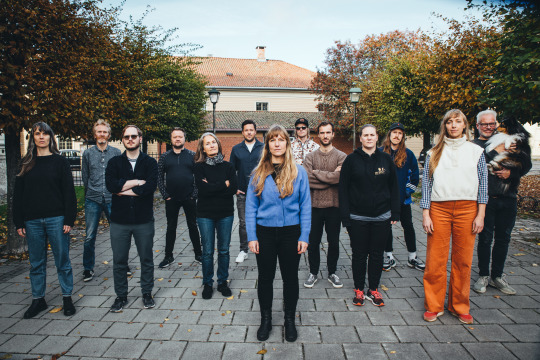
View On WordPress
#alternative#experimental#Hedvig Mollestad#indie#jazz#Maternity Suite#New Music#Trondheim Jazz Orchestra
0 notes
Text
I got tagged by @aautoccanibalissm and so here are the top six albums I've been listening to recently (well not exactly, but while this list is slightly less accurate, it's generally more true)
Ichiko Aoba - Windswept Adan
Glass Beach - Plastic Death
Yeule - Softscars
Peter Gabriel - So
Hedvig Mollestad and the Trondheim Jazz Orchestra - Maternity Beat
Jockstrap - I Love You Jennifer B

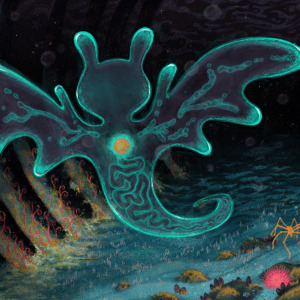




And here's a Spotify playlist for anyone interested
10 notes
·
View notes
Text
FAUN ENSEMBLE: originální dílo norských a českých umělců
Festivalový residenční projekt je jedinečnou příležitostí pro vybrané norské a české umělce vytvořit pro festival FAUN zcela nové a originální dílo. Autory kompozice jsou Andreas Røysum a Radim Hanousek. Oba do ansámblu vybrali hudebníky, se kterými dlouhodobě spolupracují. Program bude připraven a nazkoušen k festivalovému provedení v rámci brněnské FAUN residence. Provedení tohoto díla zazní vedle faunovské premiéry i v norském Oslu.
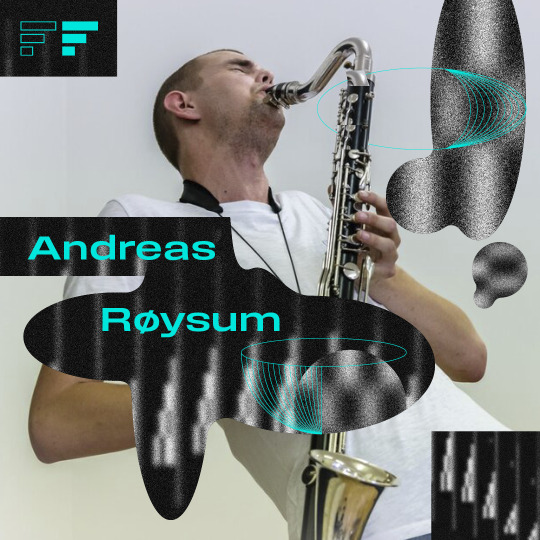
Do FAUN Ensemble pozval Andreas Røysum tři významné představitele progresivní skandinávské scény.
Naprosto originální saxofonistka a skladatelka Signe Emmeluth vede vlastní projekty Amoeba a Owl, skládá hudbu pro věhlasný Trondheim Jazz Orchestra a aktivně spolupracuje s takovými jmény jako Paal Nilssen-Love, Ole Morten Vågan, Han Bennink, Paul Lytton a Tony Buck.
Kontrabasista a výtvarník Christian Meaas Svendsen vede vlastní kvintet Nakama a je klíčovým hráčem v mnoha souborech, které vede skandinávská bubenická hvězda Paal Nilssen-Love.
Perkusista a skladatel Jan Martin Gismervik je pověstný svou kreativitou a hudební empatií. Působí v kapelách Monkey Plot, Torg, Oker, O, PGA.
Klarinetista, skladatel a hudební organizátor Andreas Røysum ve své hudbě mísí jazz, soudobou hudbu i znalosti ze studia indické klasické hudby, marocké súfi trance hudby a lidových hudebních stylů z Řecka, Turecka a Skotska. Kromě svých projektů - 13členného ansámblu, Marthe Lea Band, Miman nebo Nakama spolupracuje s hudebníky jako Alexander Von Schlippenbach, Mats Gustafsson, Tristan Honsinger a Paal Nilssen-Love.
Pro residenční Faun Ensemble napsal Røysum skladbu „Tell“, která je inspirována norským akrobatem Tellem Teigenem, pro něhož Røysumův dědeček pracoval. Dílo zkoumá pohyb a rovnováhu skrz harmonický prostor, melodické figury a variace textur.
Radim Hanousek vybral do residenčního ansámblu hudebníky ze svého projektu Dust in the Groove, který zcela otevřeně mísí soudobou hudbu, experimentální jazz a improvizaci.
Hanousek pracuje ve své skladbě FAUN s tématem bytosti Fauna, jeho bájnými fyzickými i povahovými vlastnostmi a historickou spojitostí s řeckým Satyrem a dalšími mytologickými bytostmi. Kompozice využívá zkušeností všech residenčních hudebníků se soudobou hudbou, jazzem i improvizovanou hudbou, interpretům ponechává velkou odpovědnost za zvukovou kreativitu.
Operní sopranistka Jana Vondrů se v současné době pohybuje především na poli soudobé a experimentální hudby. Spolupracuje například s Filharmonií Brno, Brno Contemporary Orchestra, Ensemble Opera Diversa.
Akordeonistka Žaneta Vítová tvoří s Janou Vondrů pilíř tria CONTriology, působí v experimentálním duu se zpěvačkou a hlasovou performerkou Annou Matvia, spolupracuje s Pražským improvizačním orchestrem, Operou Národního divadla Brno, Operou Diversa a Hausoperou.
Trumpetista Jan Přibil hraje jak soudobou hudbu (ansámbl Lichtzwang), tak i moderní jazz (Concept Art Orchestra, Cotatcha Orchestra).
Radim Hanousek se hudebně zaměřuje na různé podoby improvizace, intermedialitu a projekty na pomezí jazzu a soudobé vážné hudby a to jako interpret (saxofonista a basklarinetista) i jako autor a pedagog. Jako improvizátor spolupracuje s mnoha umělci z celé Evropy. Již 10 let vede vlastní projekt Dust in the Groove a je aktivním členem mezinárodních ansámblů NOCZ a Prague Music Performance Orchestra.





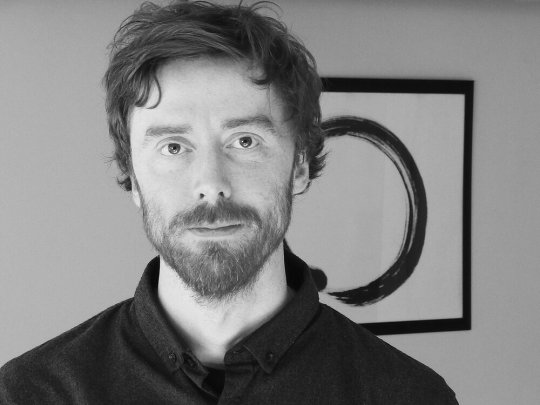

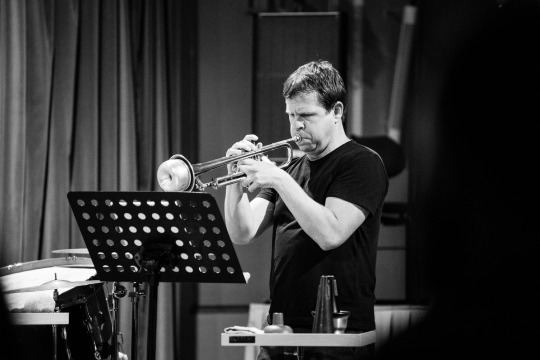
FAUN ENSEMBLE
Andreas Røysum – klarinety, flétny, kompozice
Signe Emmeluth – alt saxofon
Christian Meaas Svendsen – kontrabas
Jan Martin Gismervik – perkuse
Radim Hanousek – basklarinet, saxofon, kompozice
Jana Vondrů – zpěv
Jan Přibil – trubka
Žaneta Vítová – akordeon
Vstupenky jsou v prodeji na www.faunfestival.cz

Projekt je realizován za podpory ― Fondy EHP a Norska
0 notes
Text
Rules Free Radio Jan 3

Tuesdays 2pm - 5pm EST Rules Free Radio With Steve Caplan
bombshellradio.com
On the next Rules Free Radio with Steve Caplan, we'll spend the entire show we’ll spend listening to music that came out in 2022. We’ll revisit music by a few of the year's favorites, we’ll hear new tracks we didn’t get around to from artists I played, and we’ll hear a bunch of the releases we never got around to checking out. There will be a range of music including some Rock and Pop releases from artists like Robyn Hitchcock, Triptides, Ward White, The Speedways, Richard Ohrn, and Arctic Monkeys. Some singer-songwriter offerings from Chris Brain, Katie Spencer, Florence Dore, Caamp, and others. We’ll hear some Jam bands and funk including Snarky Puppy, Trombone Shorty, and Hedvig Mollestad. We’ll do a set with an international flavor with Hermanos Guttierez, BALTHVS, and Abraxas. The third hour is a variety of the many great Jazz releases of 2022 including one from Jakob Bro and Joe Lovano’s tribute to drummer Paul Motian, Joel Ross, Binker Golding, Enrico Rava and Fred Hersch, and a few more. All starting Tuesday afternoon at 2 pm on Bombshellradio.com!
Broken Bells - Invisible Exit
Annie Taylor - All The Time
The Dowling Poole - The Same Mistake Again
Ward White - 50,000 Watts Ago
Triptides - Midnight
Katie Spencer - Go Your Way
Chris Brain - Peace and Quiet
Khruangbin and Vieux Farka Toure - Tamalla
Nilüfer Yanya - The Dealer
BALTHVS - Eclipse Solar
Hermanos Gutiérrez - Thunderbird
Charlie Gabriel & Preservation Hall Jazz Band - Yellow Moon
Abraxas - Göbekli Tepe
Fenella - The Metallic Index
Arctic Monkeys - Body Paint
Carla dal Forno - Mind You’re On
Christine and the Queens - My Birdman
Robyn Hitchcock - The Shuffle Man
The Speedways - A Drop In The Ocean
Caamp - Come with Me Now
Florence Dore - Sweet To Me
Librarians With Hickeys - When We Were Young
Richard Ohrn - Seal Your Move
Snarky Puppy - Mean Green
Ebi Soda - Pseudocreme
Trombone Shorty - Lifted
Emanuel Harrold - Yes We Can
Hedvig Mollestad and Trondheim Jazz Orchestra - On The Horizon part 2
Noah Garabedian - Expectation. Regret
Binker Golding - Howling and Drinking in God’s Own Country
Harish Raghavan - In Tense
Joel Ross - Prayer
Trish Clowes - Morning Song
Jakob Bro & Joe Lovano - Song To An Old Friend
Vadim Neselovskyi - Winter in Odesa
Enrico Rava and Fred Hersch - Retrato em Branco e Preto
Read the full article
0 notes
Text
Hedvig Mollestad & Trondheim Jazz Orchestra - Maternity Beat (2022)
Hedvig Mollestad & Trondheim Jazz Orchestra – Maternity Beat (2022)
Country: Norway
Genre: Progressive Rock, Eclectic Fusion
Year: 2022
(more…)

View On WordPress
0 notes
Video
vimeo
Trondheim Jazz Orchestra & Atomic - Arcimboldi
Energimølla, Kongsberg, July 2019
Music by Hans Hulbækmo
Performed by Trondheim Jazz Orchestra & Atomic
Recorded and mixed by Tor Breivik
Filmed and edited by Sigurd Ytre-Arne
#concert#live#atomic#trondheim jazz orchestra#video#jazz#festival#kongsberg#jazz festival#kongsberg jazz festival
1 note
·
View note
Text
Ola Kvernberg - Monolith - a teaser for his forthcoming album Steamdome III: Beyond the End. Still straddling the prog rock/jazz border, with an even larger ensemble this time, adding the Trondheim Symphony
Three years have passed since the critically lauded 'Steamdome II: The Hypogean' etched its mark on Norwegian music history. Now, Kvernberg amplifies his sound with the addition of 60 musicians from the Trondheim Symphony, ignites the graviton train, and sets his sights on catapulting us into the stratosphere - Beyond The End. The premiere offering is 'Monolith' - the symphony's climactic movement:
— When I embarked on the symphony, I surprisingly started with the finale. In my quest for a pivotal moment, I found myself gravitating towards a musical critical mass. This emerged through an airy but weighty, off-kilter and breakbeat-inspired drum groove, one that resonated harmoniously with the boundless spectrum of instruments at my disposal. This unique confluence of sounds and rhythms didn't just provide a setting for individual brilliance but, more significantly, fostered a synergistic environment where the band and the orchestra could flourish together.
In the upcoming album 'Beyond the End', Ola Kvernberg blends rhythmic vitality with symphonic force in a composition that defies every music genre norm. "Monolith" is the culmination of three movements, where Kvernberg extends an invitation to the classical domain for a modern dance amidst electric squalls and symphonic surges of adrenaline.
2 notes
·
View notes
Text
Hedvig Mollestad Interview: Move Inside the Weather

Photo by Francesco Saggio
BY JORDAN MAINZER
Tempest Revisited (Rune Grammofon), the upcoming album from Norwegian guitarist Hedvig Mollestad, is all about moments in time. For one, the music itself was composed as part of a commission to celebrate the 20th anniversary of cultural house Parken in 2018. (When Parken opened in 1998, legendary composer Arne Nordheim debuted The Tempest; Mollestad’s new album is a self-described “bookend” to The Tempest.) The album, one the other hand, was recorded in 2019, and in the recording process, Mollestad wished to revisit the past, namely the winter storms of Ålesund, where she was born (and home to Parken). Opener “Sun On A Dark Sky” opens with reeds, rumbling percussion, and distorted voices, the unease of an approaching storm that belies gently moody guitar and tenor sax. The threats of bad weather are mirrored by wavering vibraphone, bluesy guitar riffing, and speedy nordwave and drums. “Winds Approaching” sways like gusts, with a two-note mirrored saxophone and guitar riff, and ends with some serious shredding. The funky “Kittywakes In Gusts” recalls the way birds play in the wind. “418 (stairs in storms)”, named after the number of stairs you have to climb to get to a scenic overlook in Ålesund, like the first two tracks on the album, begins unassumingly, trickling guitars, warm reeds, and tapping drums, but builds up to prickly blues riffing.
Over a Zoom conversation last month, Mollestad told me about the topography of Ålesund and how she attempted to have the instrumentation of the album correspond to different natural elements. She also talked about where Tempest Revisited fits within her discography and songwriting tendencies and playing the songs live. Read our conversation below, edited for length and clarity.
Since I Left You: Did you go into Tempest Revisited intending for it to be a bookend to Arne Nordheim’s The Tempest?
Hedvig Mollestad: I don’t know if this is a regional thing, but in Norway, it’s very common for cultural houses, festivals, or big organizers to invite composers or musicians to do commissioned pieces of music for celebrations and anniversaries. This was one of those things. Where I grew up, there is a cultural house, Parken, and they were celebrating twenty years. Their manager contacted me and asked me if I wanted to do 1 of 4 commissions, one for each season: spring, summer, autumn, and winter storms. None of the other commissions came through, so I was the only one left. That was the winter storms idea. This manager, I went to school with him when I was a kid, so we know each other quite well and had a lot of conversations on how this should be. This culture house is not very commercial, but it’s very beautiful. It’s in this city center, close to a mountain. For him, he wanted to connect this commission to the culture house and winter storms and the city of Ålesund where I grew up.
When we started to converse more about it, I wanted to embrace my kind of weather and Ålesund and storm I lived through when I grew up there. I thought a lot about the philosophical aspect of it before making the music.
SILY: The songs on here sound like they have intentional moods and correspondence to natural elements. Can you talk more specifically about how you came up with those correspondences?
HM: This is not program music. You’re not supposed to hear whatever the title refers to. But as a composer, it’s a privilege to put a name for the piece. What I was thinking when I was making this whole piece was the view from where I grew up. I can see straight west, and to the left, it’s a big long mountain. When a storm is approaching, I can see it 20 minutes before it hits the place where I’m at. “Sun on a Dark Sky” is when the sun is still with me, but I can see what’s coming in the horizon. That was trying to embrace the light, the shadows, the contrast between the warmth of the sun and what I see from the west. I wanted to move inside the weather aspect of it.
"Winds Approaching” was more light and not so meditative. It was supposed to be “winds approaching, but nothing severe.” The birds are playing on the wing. I wanted it to be light and anticipating what was about to come. What is crucial to note here is it was written in 2018, more than one year before I wrote Ekhidna. It was earlier in my composing career. In this music, I can hear a lot of the ideas that come out later in a monstrous way. I can hear that I’m working on ideas on a more basic level. I’m going back to the root of working with the reeds and trying to make them sound good together and not going crazy loud rock guitar. I’m trying to pinpoint something else.
[With] “Kittywakes In Gusts”, I wanted to have this fun-to-play jazz/blues theme in the middle of the commissioned work, because I knew the players that were going to play. Just something more rock-ish and straight. It’s fun to watch the kittywakes play in the gusts. It’s kind of artistic.
We turn into the “418″, which in the middle of the city where the cultural house is, there’s a viewpoint all the tourists are brought to by bus. My grandparents used to live by this city mountain. It’s so great because you can walk there from the city centers, but then you have to do 418 stairs. When I was a kid, there was rough weather--nothing like the hurricanes in your country--but the power went, and the roofs were flying, the trees were breaking, and I was thinking when I wrote this, to humans, the weather is something that can kill you and devastate, but to this mountain that’s been there for however long, it’s just very, very quiet or subtle. I was trying to think of the storm from the mountain’s point of view.
SILY: It’s increasingly relevant these days with climate change, as weather related disasters affect more people, but from the standpoint of nature, it is what it is.
HM: There’s no value to it. It’s not good or evil; it’s just happening. Everything with life happens without a sense of meaning unless we humans put [meaning] in it.
SILY: Did you try for certain instruments to correspond to specific aspects of weather?
HM: The saxophones were kind of free, but I was very into the timpani together with the flute. That was the closest I could get to capturing the visceral darkness and the streams from the sun cutting through everything. That was the instrumentation idea and important for me to keep as an opening and a closing to the album. For the reeds, I just wanted them to be together like the birds that work together as they fly together.
There is a piece that didn’t make it to the record that was quite fun, in the middle of this, a solo part for Ivar [loe Bjørnstad], the drummer. It was called [in English] ”Ivar is tying up all the garden furniture”. He was getting on this big percussion kit. It was fun having him do that in the middle of this piece, but unfortunately, it didn’t make it in the record.
SILY: You mentioned wanting to stray from rock and roll guitar, but there are still some places on here where they show up, like on the end of “Sun on a Dark Sky” and “Winds Approaching”. “Kittywakes” and “High Hair” are these funky stomps. To what extent were you trying to make something raw and fun with those last two tracks?
HM: “Kittywakes” is a little rockish, but playing it was a big difference playing with the reeds as opposed to just the basic drum and bass. When you play it acoustically, whether live or in the studio, you have to relate to them. I couldn’t play as loud as I wanted because it would fuck up the dynamics of how you could listen on stage. I think it’s important within a band to relay to each other what you can do decibel-wise. You have to be polite. You have to level onto each other. They had to play stronger and more powerfully, and I had to ease a little up. So in my hearing, even though it’s full tilt, I think “High Hair” was the one song where I really thought I wanted to do the things I usually do that I love the most. It was that intention that everybody was going to let loose and finish this off in a manner that’s expected. That’s what I love to do at the end of a set. It was very natural to finish it off and get us as close as possible to this stormy climax.
SILY: How often do you visit where you grew up?
HM: I have two children now, so they’re very much the reasons I go back, so they can visit their grandparents. I’m there about 4 times a year with them. I regularly play there. I was probably there a couple months ago.

SILY: What’s the story behind the cover art for this record?
HM: The cover art on all Rune Grammofon records are made by one artist, Kim Hiorthøy. Since I’ve released records there, I’ve always felt the artwork is important. All the records I’ve been listening to since childhood and that I still love, the artwork is very important. I’ve always wanted him to do photos on my records, which is what he’s done, but this time, he wanted to put something on top of my face to do something other than what we had been doing. When we tried to do this session, I was lying on a bench, and he put very many things on top of me. Bananas, clay, so many different things just to see how it worked. He dropped these shiny pearls on me and moved them around a little bit. Two of them were on my eyes when he took the picture. He [had] the artistic freedom to take it. I didn’t see any of the other [photos]. I thought it was really mystic, cool, and freaky, because as I’m lying down, I think the expression in [my] face was weird. I think it’s pretty scary.
SILY: Have you played these tracks live before?
HM: We played [them] in 2018 when it was first finished for the actual anniversary of the cultural house. I also played a couple of these tracks with the [Hedvig Mollestad] Trio. We brought in saxophone players as part of the Trio show; we played “High Hare” and “Kittywakes” and had horn players for a big ending to a special show. As a big ensemble, it’s been hard to make a whole tour of it. Ekhidna is still touring. We’re doing one release show here in Oslo. It looks like there might be some touring next year.
SILY: What else are you working on and do you have coming up?
HM: Last year, I was writing a big commission work for 12 musicians, the Trondheim Jazz Orchestra. I finished it last year. It’s called Maternity Beat, and we just finished recording it in the studios in Norway. We’re mixing it in a couple weeks and it will be released next autumn, because it takes so long for the vinyl to press these days. I’m really excited about it.
SILY: Is there anything you’ve been listening to, watching, or reading lately that’s caught your attention?
HM: I’ve been reading two books that have made a big impression on me. They’re both Norwegian writers. Dag Hoel’s Fred er ei det beste, which is about the ammunition production in Norway. Norway produces a lot of war materials. It made such an impression on me, especially when I was about to record Maternity Beat. There’s another one called Liv by a professor named Dag O. Hessen. It’s about the meaning of life, but in a very entertaining way.
I just read George Orwell’s 1984 too, which I hadn’t read before. I knew what it was going to be about and what was going to happen, but I still felt nauseous at the end of it. It’s absolutely fascinating and very relevant, especially after I read the book on Norwegian ammunition about how we ignore things that matter because we just care about having the easiest way of living.
youtube
#hedvig mollestad#interviews#francesco saggio#parken#trondheim jazz orchestra#tempest revisited#rune grammofon#arne nordheim#the tempest#ekhidna#ivar loe Bjørnstad#kim hiorthøy#hedvig mollestad trio#maternity beat#dag hoel#Fred er ei det beste#liv#dag o. hessen#george orwell#1984
2 notes
·
View notes
Photo

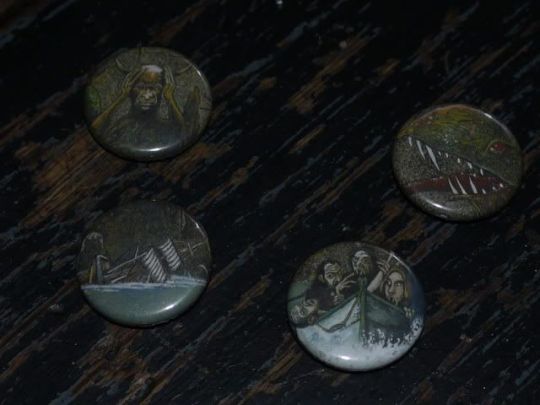




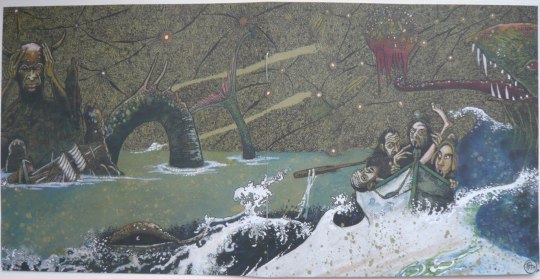
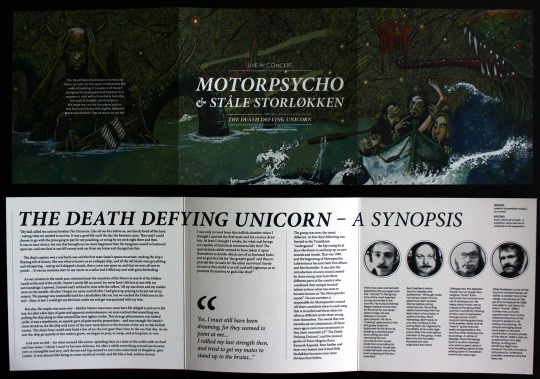

Disco #91: Motorpsycho x Ståle Storløkken - The Death Defying Unicorn
De Motorpsycho hablé en la entrada #10 la manera de cómo los conocí y cómo se transformaron en mi banda favorita actual (llevado con no sé cuántas bandas más), y aunque recuerdo que en algún momento me hice una promesa de no repetir bandas, también ideé un formato distinto para indicar otros discos de una misma banda que me marcaron. No sé cómo lo haré en realidad, pero lo más seguro es que sea en un formato corto, así que experimentaré en este momento.
“The Death Defying Unicorn (A Fanciful and fairly far-out Musical Fable)” es un disco doble conceptual en donde Motorpsycho se junta con el tecladista y compositor Ståle Storløkken (también noruego) para armar una historia épica a la manera de “Moby Dick”. Para llevar a cabo ello, se apoyaron en la ‘Trondheim Jazz Orchestra’ e hicieron esta obra a pedido para un festival de Jazz de Noruega. Pero para muchos se convirtió en el disco definitivo de Motorpsycho, ya que toda la épica que venían mostrando en discos anteriores, acá se expandió (gracias a la orquesta) a niveles dantescos.
En mi caso, después del “Little Lucid Moments” empecé a escuchar los discos en orden de aparición, y cuando llegué a este disco, aparte de gustarme de inmediato y pelear el trono del mejor disco de ellos, lo dejé para cuando hiciese viajes a otros lugares. De hecho, cuando voy a Lampa a visitar a familiares, este disco es el primero que suena, y hasta pareciese que se sabe el recorrido, porque es rápido cuando el bus se apura, y lento cuando el bus se acerca a destino. Locura mía, claro, pero me funciona de esa manera.
¿Mejor disco de ellos? No sé, al “Little Lucid Moments” lo tengo bien arriba, pero de que está en el podio, lo está. ¿Alguna joyita del disco? “La Lethe”, con su viaje musical en el infierno y el saxo final sanando todo. Pero sus 85 minutos seguidos son lo mejor.
#motorpsycho#stale storlokken#the death defying unicorn#experimental#eclectic#progressive rock#orchestra#norway#2010s#10s
1 note
·
View note
Text
Lucy Railton / Max Eilbacher — Forma / Metabolist Meter (Foster, Cottin, Caetani and a Fly) (Portraits GRM)
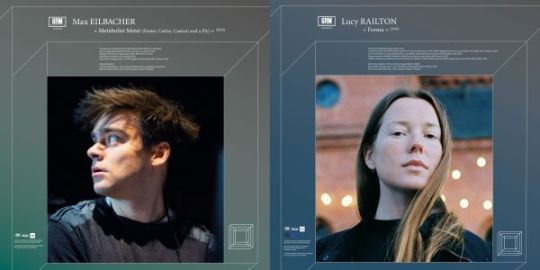
Portraits GRM is a new manifestation of the partnership between Editions Mego, a Viennese record label, and the Groupe de Recherches Musicales (aka INA-GRM), a French institution that has been facilitating the continued development and presentation of musiques concrètes and subsequent non-popular electronic musical approaches since the 1950s. That alliance has already resulted in Recollection GRM, another series of releases that presents LPs of both historically significant and under-appreciated music from the INA-GRM archive. The mission of this new project is the presentation of new work, once more on LP. Its first release, Jim O’Rourke’s Shutting Down Here, spanned two sides of a vinyl record. The second is this split LP, which features side-long pieces by Berlin-based Englishwoman Lucy Railton and Baltimore resident Max Eilbacher, and which may be more representative of what one might expect from the label in the future. Each contribution was first presented to the listening public in Paris during the warm-weather months of 2019, and has been remixed from multi-speaker mixes down to stereo.
Forma by Lucy Railton
The Latin root of Forma is form, and the name of Railton’s piece might be an acknowledgement of a central aesthetic challenge: how does a cellist function creatively in the 21st century? As a performer and side-person, the answer is pretty straightforward; you work with the people who want to work with you. In that capacity, she’s played with Welsh harpist and improviser Rhodri Davies, experimental techno composer Beatrice Dillon and the Trondheim Jazz Orchestra. But as a musical originator, Railton has toggled between cello, which she plays in classically informed fashion, and electronics.
Forma is a piece for multi-channel tape and live cello. The recorded material was aggregated over a couple years, and it includes the sounds of an organ in Iceland, the GRM’s own Serge synthesizer, and Railton’s home-based electronics. The keyboard sounds that introduce the piece could have been lifted from the soundtrack to some 1970s-vintage horror movie, but they quickly yield ground to high, shimmering pitches and distorted, machine-like squelches. Certain sounds grind to a stop and then re-accelerate, as though a finger had been placed upon the tape reel. This music would originally have been heard through the Acousmonium, the GRM’s 80-speaker sound system, but the stereo remix is both transparent and balanced. As the mix compounds, Railton’s cello flickers in and out of hearing. It sounds distorted at first, but the more present it becomes, the less processed it sounds. Even coming out of two speakers, it’s an immersive listening experience; what a shame that it’ll take a pandemic-vanquishing vaccine and a ticket to Paris to hear it in its original form. But the negotiation between the cello and the rest of the piece also invites one to think of Forma as more than a sensual experience. Is Railton making a statement about what it takes to get people to pay attention to a cello these days? If so, her dilemma neatly parallels the one that Portraits GRM is meant to tackle.
Metabolist Meter (Foster, Cottin, Caetani and a Fly) by Max Eilbacher
Metabolist Meter (Foster, Cottin, Caetani and a Fly) opens with bursts of static that smack-smack-smack the listener’s ear like the loose end of a spinning reel of tape. Having cued the listener to listen for rhythms, Eilbacher starts tossing them out, one after another, creating a thicket of ticks, tocks, and marimba-like resonations. These are blown aside by a series of hammering, hard to source beat patterns, which are periodically scrunched up with more static noise or the taffy-pulled tones of Ka Baird’s flute. The polyrythmic play is interrupted temporarily by a sequence out of phase French-language recitations and the captured buzz of a fly. It’s harder to draw implied meaning out of Eilbacher’s piece than Railton’s, but if you’re in the mood for a freak-out that only reveals the fine calibrations of its creation in retrospect, here you go. And in that respect, Eilbacher’s work fits right into the GRM tradition.
Bill Meyer
#lucy railton#max eilbacher#forma#Metabolist Meter (Foster Cottin Caetani and a Fly)#portraits GRM#bill meyer#albumreview#dusted magazine#ina grim#electro-acoustic music
2 notes
·
View notes
Text
Amgala Temple: Invisible Airships
Amgala Temple: Invisible Airships
View On WordPress
#a-ha#Amgala Temple#Amund Maarud#Gard Nilssen#Invisible Airships#Jaga Jazzist#jazz-rock#Lars Horntveth#morriconiano#psichedelia#spaceships#Tangle Edge#Trondheim Jazz Orchestra#Western
0 notes
Video
youtube
0 notes
Text
601: Aaron Olguin on solo playing
Aaron Olguin is one of my favorite people, and it has been such fun following along with his projects and successes in the music world. Aaron was the opening classical headliner for the 2019 International Society of Bassists Convention, and he and I also played on Andrés Martín’s recital at the convention.
We talk about what he played on is recital, what his new job in the Trondheim Symphony Orchestra is like, and more! Enjoy, and check out our deep-dive with Aaron and his career from early 2019 here.
Listen to Contrabass Conversations with our free app for iOS, Android, and Kindle!
Contrabass Conversations is sponsored by:
D'Addario Strings
This episode is brought to you by D’Addario Strings! Check out their Zyex strings, which are synthetic core strings that produce an extremely warm, rich sound. Get the sound and feel of gut strings with more evenness, projection and stability than real gut.
The Bass Violin Shop
The Bass Violin Shop offers the Southeast’s largest inventory of laminate, hybrid and carved double basses. Whether you are in search of the best entry-level laminate, or a fine pedigree instrument, there is always a unique selection ready for you to try. Trade-ins and consignments welcome!
Kolstein Music
The Samuel Kolstein Violin Shop was founded by Samuel Kolstein in 1943 as a Violin and Bow making establishment in Brooklyn, New York. Now on Long Island, over 60 years later, Kolstein’s has built a proud reputation for quality, craftsmanship and expertise in both the manufacture and repair of a whole range of stringed instruments, and has expanded to a staff of twelve experts in restoration, marketing and production.
Upton Bass String Instrument Company
Upton's Karr Model Upton Double Bass represents an evolution of our popular first Karr model, refined and enhanced with further input from Gary Karr. Since its introduction, the Karr Model with its combination of comfort and tone has gained a loyal following with jazz and roots players. The slim, long “Karr neck” has even become a favorite of crossover electric players.
Texas Hill Country Bass Collective
Join them July 22 thru July 25 for our 6th annual Austin Bass Workshop at the amazing Westlake High School. Come join friends from the Texas Hill Country Bass Collective for four days of music, bass, and fun and work with 2019 featured guest artist (and past Contrabass Conversations guest) Dennis Whittaker!
A440 Violin Shop
An institution in the Roscoe Village neighborhood for over 20 years, A440's commitment to fairness and value means that we have many satisfied customers from the local, national, and international string playing communities. Our clients include major symphony orchestras, professional orchestra and chamber music players, aspiring students, amateur adult players, all kinds of fiddlers, jazz and commercial musicians, university music departments, and public schools.
Contrabass Conversations production team:
Jason Heath, host
Michael Cooper and Steve Hinchey, audio editing
Mitch Moehring, audio engineer
Trevor Jones, publication and promotion
Krista Kopper, archival and cataloging
Subscribe to the podcast to get these interviews delivered to you automatically!
Check out this episode!
2 notes
·
View notes